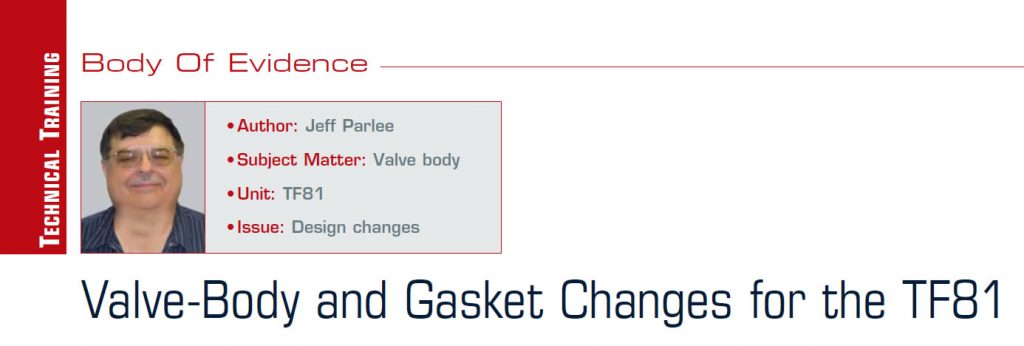
Body of Evidence
- Author: Jeff Parlee
- Subject Matter: Valve body
- Unit: TF81 (AF21)
- Issue: Design changes
The TF81 (aka AF21) valve body has undergone some changes that you should be aware of.
The first change is to the solenoid section of the valve body. You can quickly tell the difference by the casting number, 9172 or 9174. The casting number for this section is at the top of the valve body near the manual valve. The two casting numbers have different worm-track configurations at the manual-valve bore and as a result need different gaskets between the solenoid body and separator plate.
If the gasket for the 9172 casting is used with the 9174 casting, oil will leak out of the manual-valve bore and line pressure will be significantly lower (figures 1, 2 and 3).
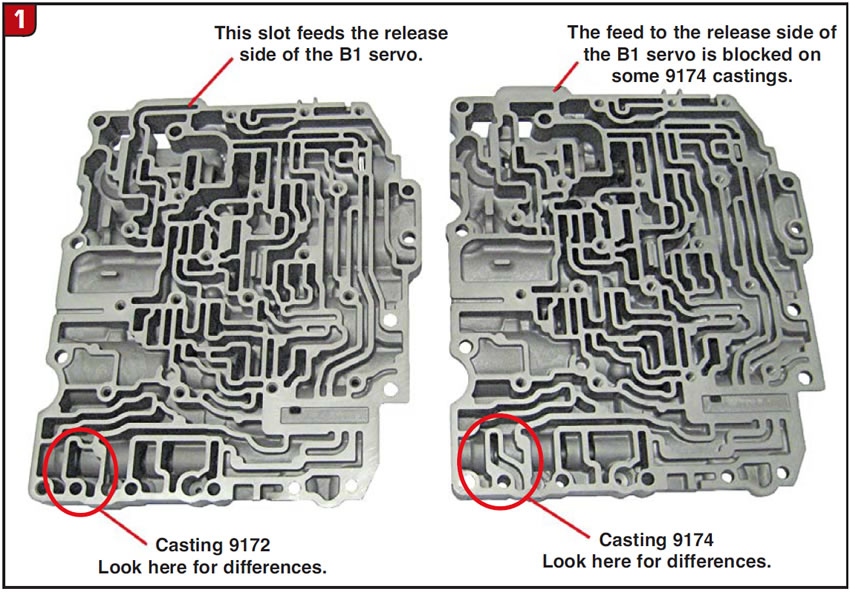
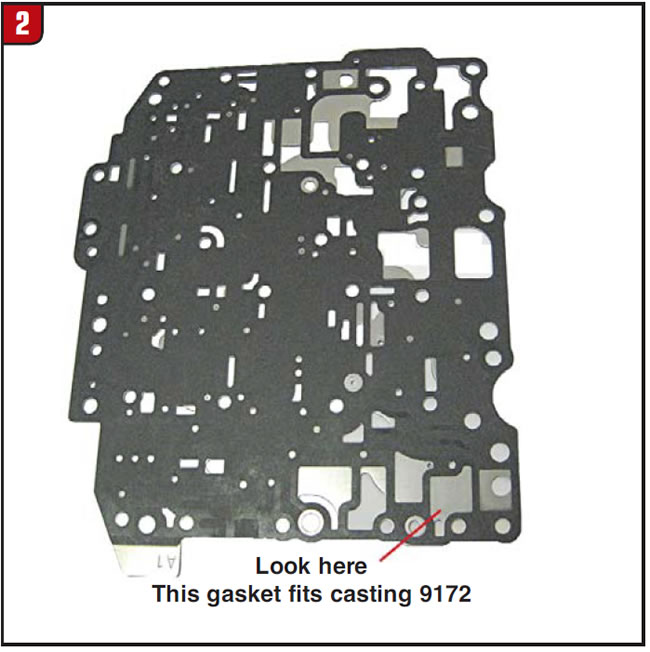
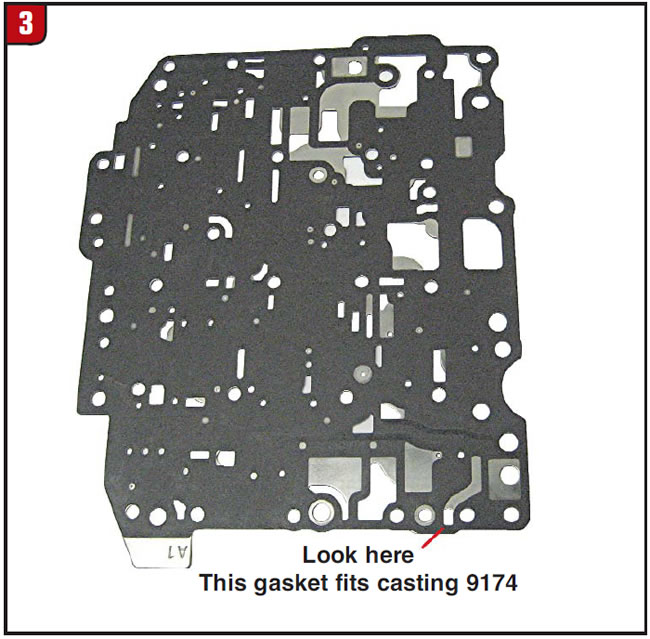

The separator-plate gaskets come from the factory with the gaskets bonded to the plate. At the present time, TransTec does sell both solenoid-body to large-separator-plate gaskets separately. Gasket B36398 fits casting 9172 and gasket B36522 fits casting 9174. The gasket between the large separator plate and the middle body is the same for all years.
The large separator plate between the solenoid body and the middle valve body marked A4 and A5 has had the lube relief hole closed, and the lube relief checkvalve and red spring have been eliminated. Eliminating the lube relief checkvalve and spring, along with closing the hole in the separator plate, raises maximum line pressure by about 20 psi; it does not affect minimum line pressure (Figure 4).
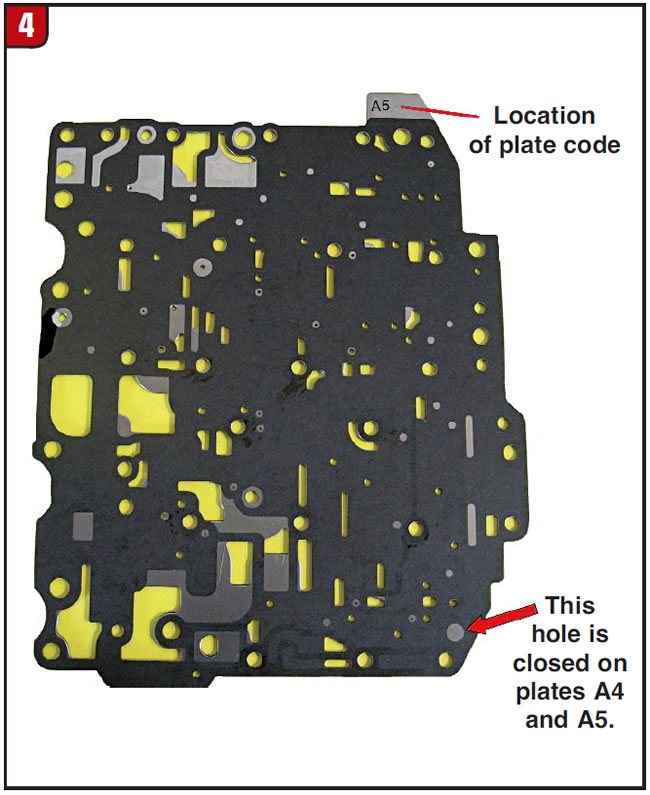

Jeff Parlee is director of product support at ValveBody Xpress.













